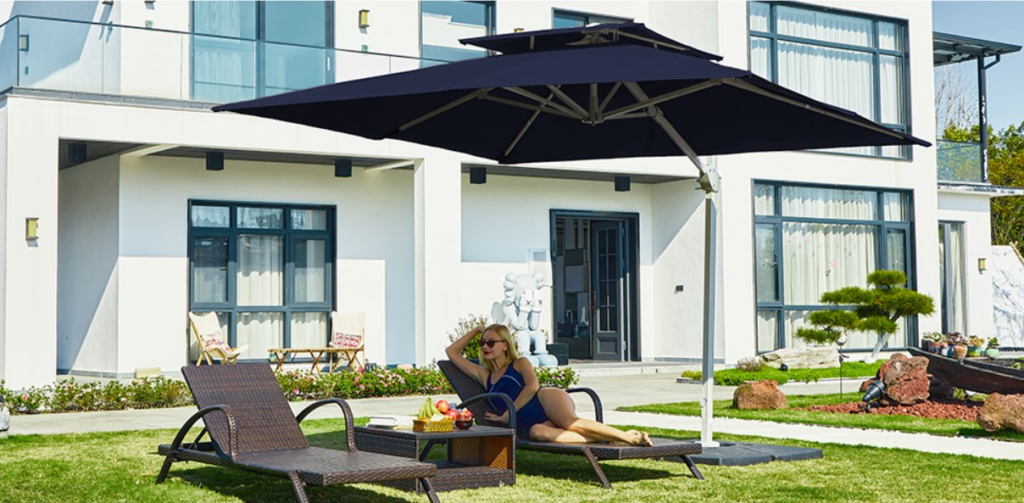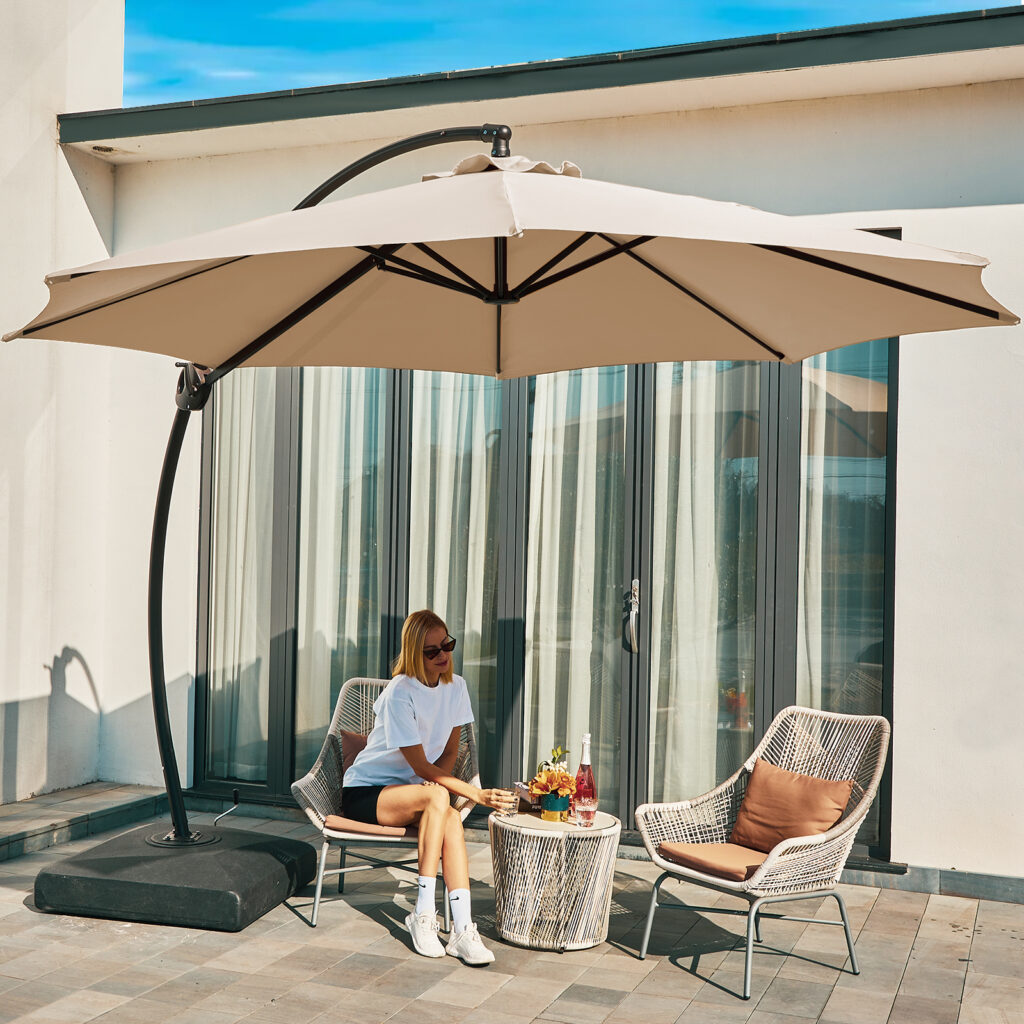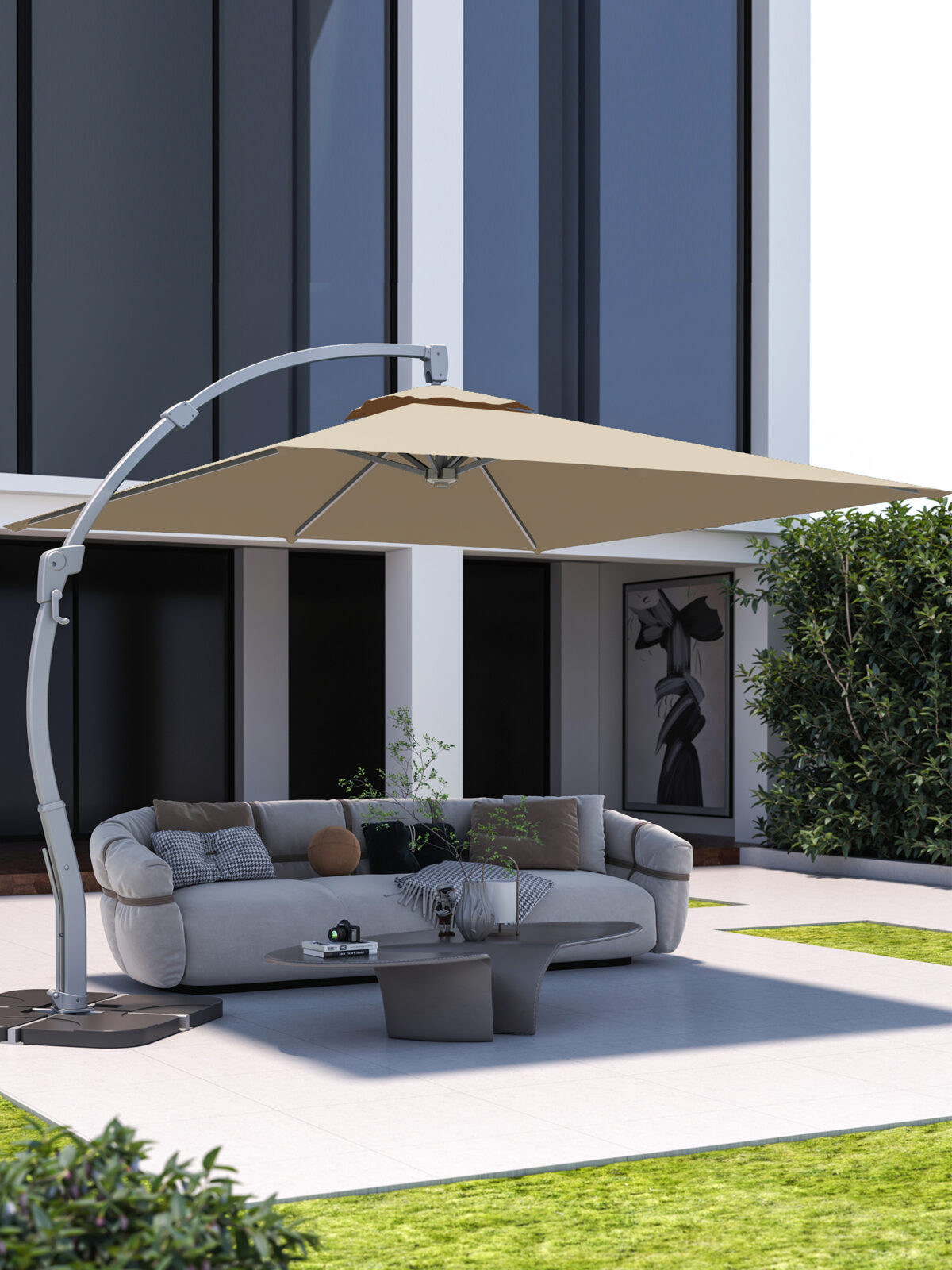When selecting a patio umbrella to complement your outdoor furniture and décor, one key decision is whether to opt for a darker muted shade or a lighter vibrant hue. Both dark and light umbrella colors have advantages and disadvantages to weigh for your particular needs.
Benefits of a Dark Umbrella
- Provides greater UV protection – Darker umbrella canopy fabrics rated with a higher UPF absorb more of the sun’s harsh rays, creating better shade. This helps prevent heat buildup underneath.
- Looks clean longer – Darker colors like black, espresso and navy conceal dirt and grime better than light colors, staying free of stains between cleanings.
- Grounds the space – A dark umbrella provides an anchoring focal point and elegant accent, especially against lighter colored furnishings. Darker tones feel more subtle.
- Versatile pairing options – Neutral deep tones like chocolate brown, slate gray and chestnut blend seamlessly with almost any furniture or exterior color palette.
- Radiates less heat – Darker fabrics absorb less light energy and radiate less heat underneath compared to lighter shades on hot sunny days.

Drawbacks of Dark Umbrellas
- Can feel overpowering – Extra-large dark umbrellas may dominate smaller outdoor spaces visually. Darkness can feel oppressive on cloudy days.
- Shows wear and fading – Over time, dark umbrella fabric is more prone to light scratches, abrasions and sun damage which appears clearly. Light hues better disguise signs of aging.
- Limited style options – Most darker umbrellas come in solid, muted colors. Finding patterns or vivid accent colors is difficult.
- Needs lighting at night – Under a dark umbrella, outdoor spaces fall into shadow earlier in evenings. Strategic lighting is key for seeing after sunset.
- Attracts bugs – Dark-colored canopies absorb and retain warmth from the sun, attracting more bugs, spiders and wasps. Lighter fabrics stay cooler.
Benefits of a Light Umbrella
- Feels airy and spacious – Optically, lighter umbrella colors brighten and expand smaller areas. The lighter shade makes covered spaces feel more open.
- Reflects heat better – Light colors like beige, yellow and ivory don’t absorb as much UV light, helping maintain comfortable shade on hot afternoons.
- Fun accent piece – Vibrant citrus shades or bold patterns stand out against more muted furnishings, creating an eye-catching focal point.
- Matches any style – Neutral tans, taupes and whites blend with a wide range of furniture looks from modern to traditional.
- Requires less lighting – White or cream umbrellas reflect natural light, allowing covered spaces to stay brighter later into evenings.

Drawbacks of Light Umbrellas
- Shows dirt – Light umbrellas readily show dust, pollen and dirt that requires frequent spot cleaning to keep looking crisp. Dark shades resist showing smudges.
- Can cause glare – Some bright white fabric can be almost blinding in direct sun. Too much reflection causes glare rather than useful shade.
- Weaker sun protection – Light colored canopies often have a lower UPF, allowing more UV light to pass through. This provides less cooling shade.
- Fades faster – Vivid or light colored dyes and prints quickly wash out and deteriorate under constant sun exposure and cleaning over time.
- Limited colorways – Finding light umbrellas in darker hues like espresso or navy is challenging. Most come in light neutrals and brights only.
Weighing the pros and cons helps determine if a darker or lighter patio umbrella better suits your needs. Assess surrounding architecture, furniture style and intended usage before picking an ideal shade that balances aesthetics, durability and comfort.
